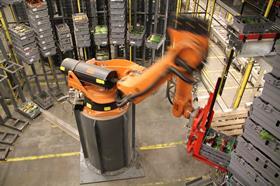
Experts have expressed concern that the British agricultural robotics sector is not fulfilling its potential in a new report.
In a comprehensive report launched last week by the UK Robotics & Autonomous Systems Network (UK RAS), researchers suggested that British agri-tech, which is larger than the automotive and aerospace industries combined, needed greater collaboration across the sector.
The report stated Britain could take global leadership in developing a new generation of “smart, flexible, robust, compliant, interconnected robotic and autonomous systems” working alongside humans in farms and food factories.
But they outlined five key obstacles to achieving this vision, including fears that the community was too fragmented, lacks training paths or centres for doctoral training, and that the projects being commissioned are too few and too small.
The remaining two barriers they listed were insufficient ongoing basic research in robotics at low technological readiness levels, and a lack of industry networks to help industry and academia work collaboratively.
Commenting on the launch of the report, author Professor Bruce Grieve of University of Manchester said: “The recent commitment of a £90million investment by the government really underlines the fact that Agri-Tech is a burgeoning market, so this whitepaper is a timely and important exploration of the use of robotics in this vital sector, which employs almost 4 million people and is larger than the automotive and aerospace sectors combined.
“Agri-Tech companies are already working closely with UK farmers, using robotics and AI to help create new technologies and bring forward new innovations, so this is a truly exciting time for the industry as we look to transform the challenges facing global agriculture into opportunities for innovation, investment and commercial growth.”
The paper outlined the potential employment of robotics including the development of field robots that can assist workers by carrying payloads and conduct agricultural operations, weeding and drilling, integration into existing farm equipment such as tractors, and robotic systems to harvest crops and conduct complex dextrous operations.



